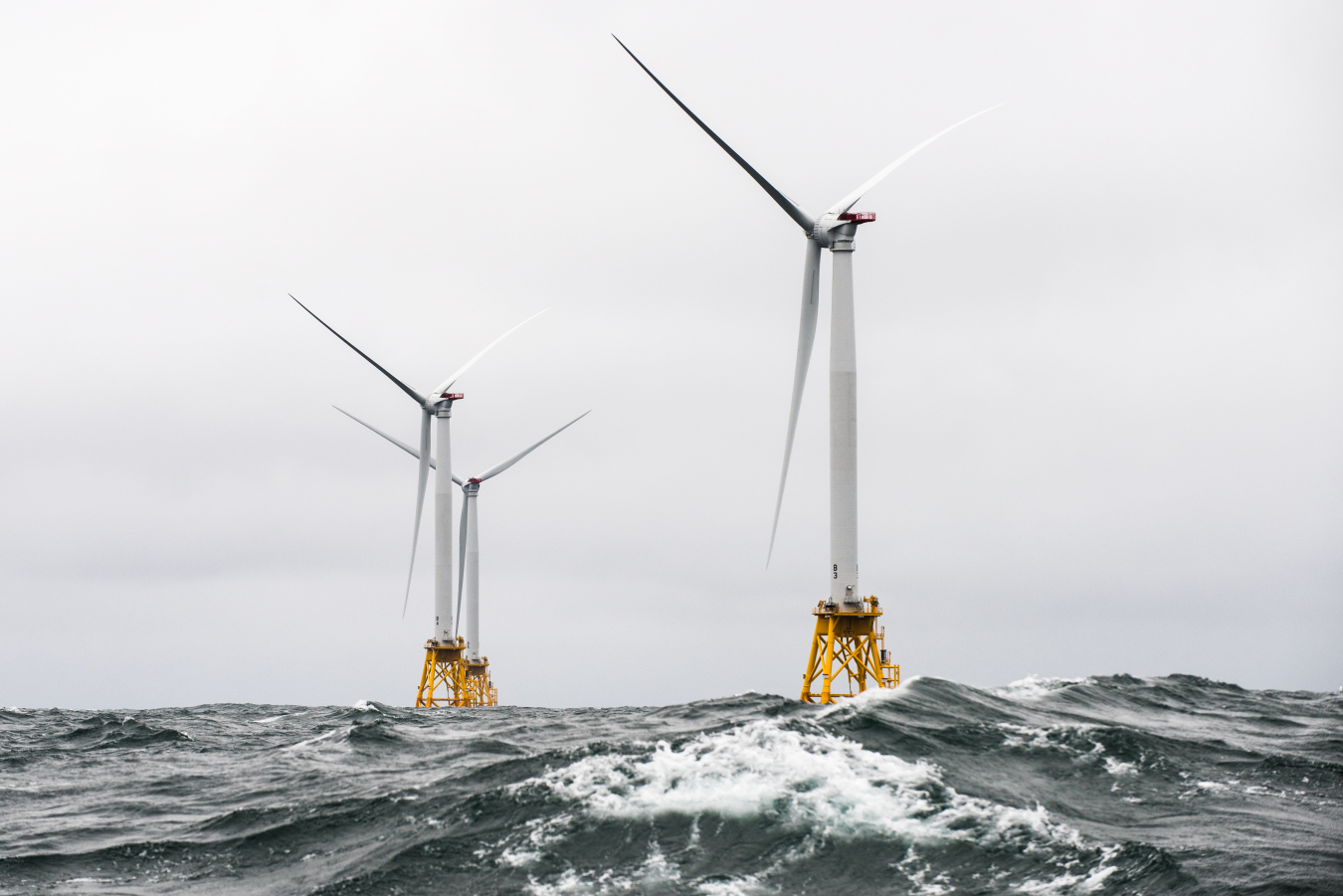The Northeast United States holds great economic promise for offshore wind development.
Wind Energy Technologies Office
October 16, 2017
Block Island Wind Farm off the coast of Rhode Island is the first commercial offshore wind farm in the country. The Northeast United States holds great economic promise for offshore wind development.
A new study found considerable economic potential for offshore wind development in the United States. The study, titled “An Assessment of the Economic Potential of Offshore Wind in the United States from 2015 to 2030,” provides insight into the variation of wind resources and economic potential for offshore wind in all of the U.S. coastal regions through 2030. Researchers evaluated the offshore wind economic potential of more than 7,000 U.S. coastal sites by utilizing descriptive statistics and high-resolution heat maps of levelized cost of energy (LCOE), levelized avoided cost of energy (LACE), and net value.
LCOE is a metric that captures the total cost of generating one unit of electricity and, in this study, is determined by examining cost factors such as average wind speed, distance from shore, soil depth, and availability of critical infrastructure.
Across all of the 7,000 coastal sites, researchers estimated LCOE to range between $130 per megawatt-hour (MWh) and $450 per MWh in 2015 and to decline to between $80 per MWh and $220 per MWh by 2027, without consideration for subsidies or renewable portfolio standards. The study found significant economic potential for offshore wind development in the Northeast United States and along the eastern shore of Virginia by 2027.
“We saw the greatest amount of economic potential identified in the New England area,” said Philipp Beiter, who conducted the study with Walt Musial, Levi Kilcher, Michael Maness, and Aaron Smith of the U.S. Department of Energy’s (DOE’s) National Renewable Energy Laboratory (NREL). The best near-term potential is in New England, but there are also pockets of economic potential elsewhere, such as along the Gulf Coast or off the shores of California.
The economic potential shows the greatest initial promise in the New England area mainly because of the shallower water depths and the distance of potential offshore wind sites to the shore. The floor of the Atlantic seaboard offers a more gradual drop in elevation than that of the Pacific, which drops more dramatically close to shore. The proximity of wind resources to shore can affect operation and maintenance costs, while ocean depth can complicate the installation of wind turbines. Deeper waters would require floating turbines, a technology still in its infancy.
“Cost reduction has been the primary goal of the offshore wind program at NREL and DOE,” said report co-author Musial. “We have found that there are numerous geographic variables that affect the bottom line, and they must be understood in the proper context. Our new cost model takes into account a wide range of spatial conditions for the waters off the coast of the United States that allow us to target global and regional cost reduction opportunities that were previously not possible.”
Although LCOE is a good measure of how much electrical generation can cost, it does not capture how a generation source—such as offshore wind—adds value to the electric system. LACE considers factors, such as the cost of competing technologies, demand patterns, and transmission constraints, to approximate how much value a technology may add over its expected lifetime—and how much the market might be willing to pay for offshore wind. Taken together, the difference between LCOE and LACE indicates the net value of offshore wind.
The results of this study will enable initial assessments of offshore wind as a part of energy development and portfolio planning in the United States. Even though detailed site-specific assessments remain essential for any offshore wind project, this study is the first to provide a comprehensive assessment of the economic potential for offshore wind across major U.S. coastal regions.
Celebrating a Year of Progress for Offshore Wind
Offshore Floating Vertical-Axis Wind Turbine Project Identifies Promising Platform Design
A Renewable Future for the Oil and Gas Industry
ThermalTracker: The Secret Lives of Bats and Birds Revealed
NREL Paves the Way for Floating Offshore Wind Semisubmersible Model Validation

